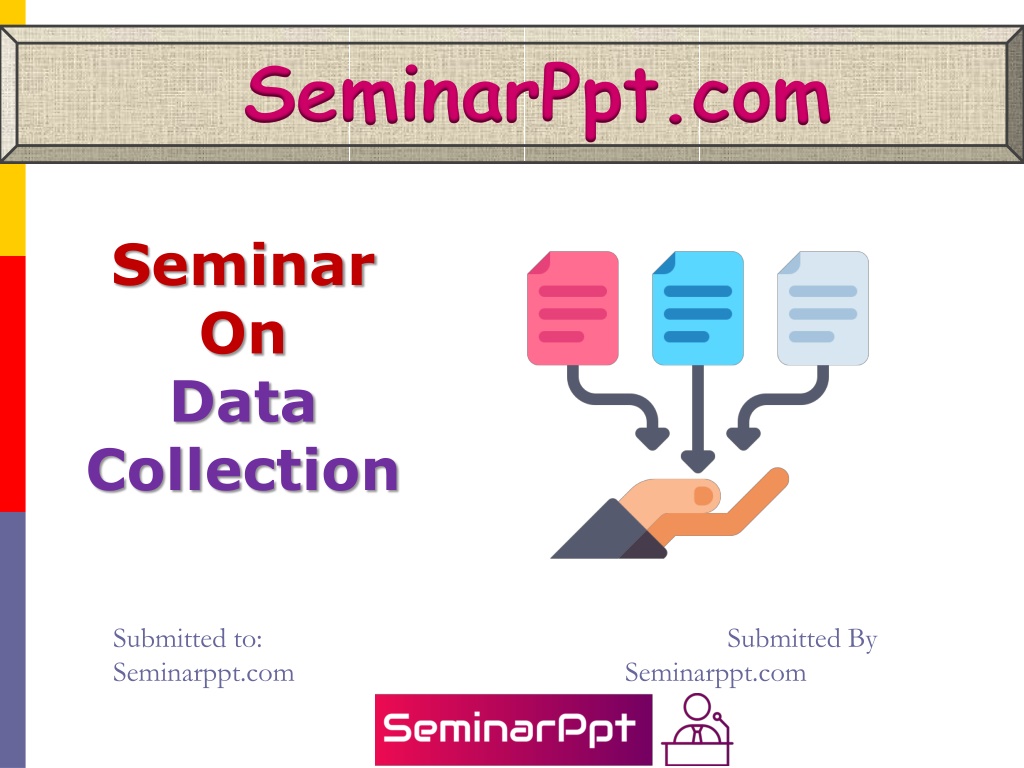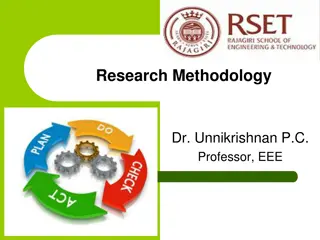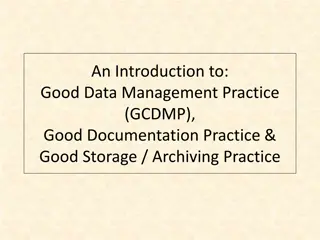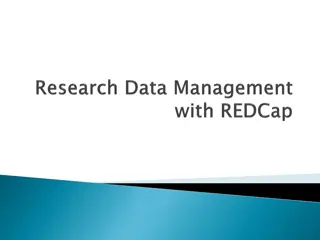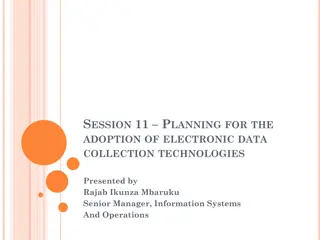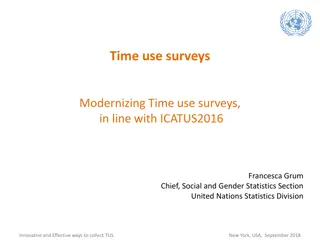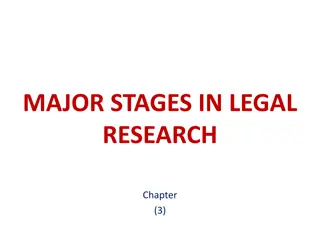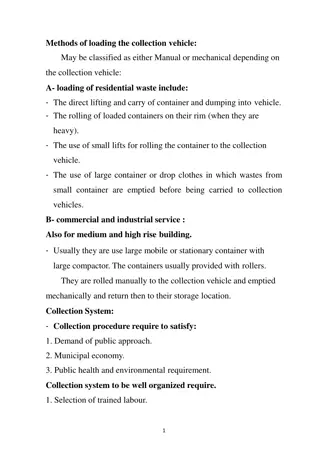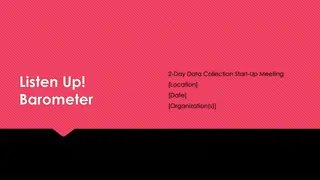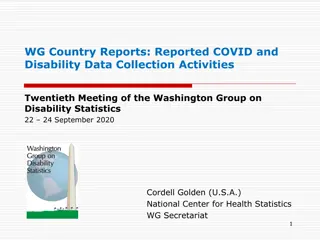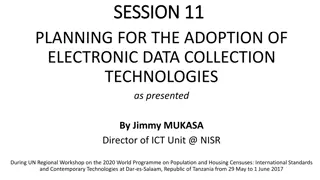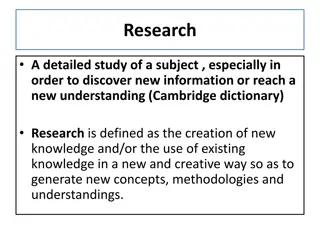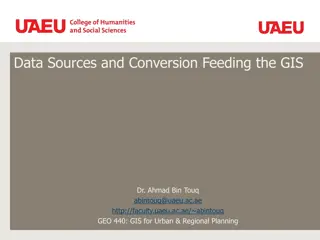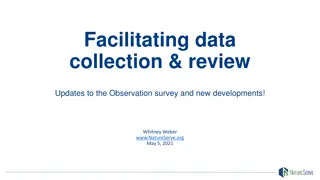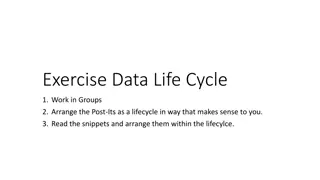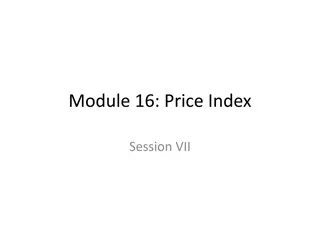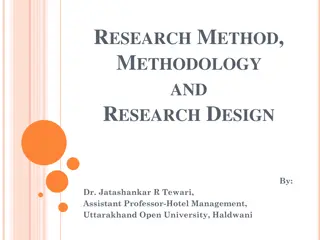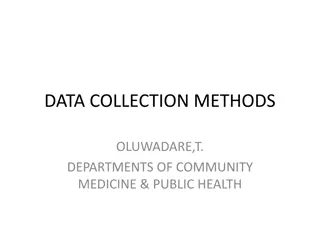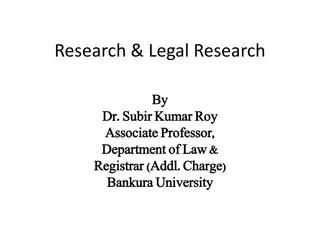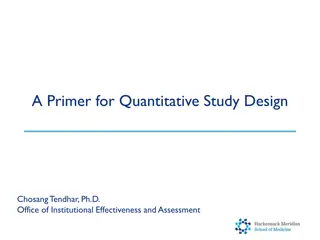Understanding the Importance of Data Collection in Research
Data collection is a systematic process crucial for obtaining quality evidence in research. It helps in answering questions, making informed decisions, and improving the integrity of research outcomes. This practice ensures accuracy, minimizes errors in decision-making, saves time and resources, and supports the need for change or innovation. Effective data collection methods are essential for gathering relevant information to analyze and draw meaningful conclusions.
Download Presentation

Please find below an Image/Link to download the presentation.
The content on the website is provided AS IS for your information and personal use only. It may not be sold, licensed, or shared on other websites without obtaining consent from the author. Download presentation by click this link. If you encounter any issues during the download, it is possible that the publisher has removed the file from their server.
E N D
Presentation Transcript
SeminarPpt.com Seminar On Data Collection Submitted to: Seminarppt.com Submitted By Seminarppt.com
Table of Content Introduction What is Data Collection? Importance Of Data Collection Data Collection Steps Data Collection Methods Primary Data Collection Methods Secondary Data Collection Methods Data Collection Challenges Conclusion
Introduction The underlying need for Data collection is to capture quality evidence that seeks to answer all the questions that have been posed. Through data collection businesses or management can deduce quality information that is a prerequisite for making informed decisions. To improve the quality of information, it is expedient that data is collected so that you can draw inferences and make informed decisions on what is considered factual.
What is Data Collection? Data collection is a methodical process of gathering and analyzing specific information to proffer solutions to relevant questions and evaluate the results. It focuses on finding out all there is to a particular subject matter. Data is collected to be further subjected to hypothesis testing which seeks to explain a phenomenon. Hypothesis testing eliminates assumptions while making a proposition from the basis of reason.
Importance Of Data Collection There are a bunch of underlying reasons for collecting data, especially for a researcher. Walking you through them, here are a few reasons; Integrity of the Research A key reason for collecting data, be it through quantitative or qualitative methods is to ensure that the integrity of the research question is indeed maintained. Reduce the likelihood of errors The correct use of appropriate data collection of methods reduces the likelihood of errors consistent with the results.
Importance Of Data Collection Decision Making To minimize the risk of errors in decision-making, it is important that accurate data is collected so that the researcher doesn't make uninformed decisions. Save Cost and Time Data collection saves the researcher time and funds that would otherwise be misspent without a deeper understanding of the topic or subject matter. To support a need for a new idea, change, and/or innovation To prove the need for a change in the norm or the introduction of new information that will be widely accepted, it is important to collect data as evidence to support these claims.
Primary Data Collection Methods Primary data is collected from the first-hand experience and is not used in the past. The data gathered by primary data collection methods are specific to the research s motive and highly accurate. Primary data collection methods can be divided into two categories: quantitative methods and qualitative methods.
Primary Data Collection Methods Quantitative Methods Quantitative techniques for market research and demand forecasting usually make use of statistical tools. In these techniques, demand is forecast based on historical data. These methods of primary data collection are generally used to make long- term forecasts. Statistical methods are highly reliable as the element of subjectivity is minimum in these methods. Time Series Analysis Smoothing Techniques Barometric Method
Quantitative Methods Time Series Analysis The term time series refers to a sequential order of values of a variable, known as a trend, at equal time intervals. Using patterns, an organization can predict the demand for its products and services for the projected time.
Quantitative Methods Smoothing Techniques In cases where the time series lacks significant trends, smoothing techniques can be used. They eliminate a random variation from the historical demand. It helps in identifying patterns and demand levels to estimate future demand. The most common methods used in smoothing demand forecasting techniques are the simple moving average method and the weighted moving average method.
Quantitative Methods Barometric Method Also known as the leading indicators approach, researchers use this method to speculate future trends based on current developments. When the past events are considered to predict future events, they act as leading indicators.
Primary Data Collection Methods Qualitative Methods Qualitative methods are especially useful in situations when historical data is not available. Or there is no need of numbers or mathematical calculations. Qualitative research is closely associated with words, sounds, feeling, emotions, colors, and other elements that are non-quantifiable. These techniques are based on experience, judgment, intuition, conjecture, emotion, etc. Surveys Polls Interviews Delphi Technique Focus Groups Questionnaire
Qualitative Methods Polls Polls comprise of one single or multiple choice question. When it is required to have a quick pulse of the audience s sentiments, you can go for polls. Because they are short in length, it is easier to get responses from the people. Similar to surveys, online polls, too, can be embedded into various platforms. Once the respondents answer the question, they can also be shown how they stand compared to others responses.
Qualitative Methods Surveys Surveys are used to collect data from the target audience and gather insights into their preferences, opinions, choices, and feedback related to their products and services. Most survey software often a wide range of question types to select. You can also use a ready-made survey template to save on time and effort. Online surveys can be customized as per the business s brand by changing the theme, logo, etc. They can be distributed through several distribution channels such as email, website, offline app, QR code, social media, etc. Depending on the type and source of your audience, you can select the channel.
Qualitative Methods Interviews In this method, the interviewer asks questions either face-to-face or through telephone to the respondents. In face-to-face interviews, the interviewer asks a series of questions to the interviewee in person and notes down responses. In case it is not feasible to meet the person, the interviewer can go for a telephonic interview. This form of data collection is suitable when there are only a few respondents. It is too time- consuming and tedious to repeat the same process if there are many participants.
Qualitative Methods Delphi Technique In this method, market experts are provided with the estimates and assumptions of forecasts made by other experts in the industry. Experts may reconsider and revise their estimates and assumptions based on the information provided by other experts. The consensus of all experts on demand forecasts constitutes the final demand forecast.
Qualitative Methods Focus Groups In a focus group, a small group of people, around 8-10 members, discuss the common areas of the problem. Each individual provides his insights on the issue concerned. A moderator regulates the discussion among the group members. At the end of the discussion, the group reaches a consensus.
Qualitative Methods Questionnaire A questionnaire is a printed set of questions, either open-ended or closed-ended. The respondents are required to answer based on their knowledge and experience with the issue concerned. The questionnaire is a part of the survey, whereas the questionnaire s end-goal may or may not be a survey.
Secondary Data Collection Methods Internal sources of secondary data: Organization s health and safety records Mission and vision statements Financial Statements Magazines Sales Report CRM Software Executive summaries
Secondary Data Collection Methods External sources of secondary data: Government reports Press releases Business journals Libraries Internet
Conclusion Data collection is no more a once in a blue moon affair. Collecting data has become a necessity for all organisations that want to be able to make better informed decisions. Collecting data lets you know what your customers think about your brand, points out the areas that can improve, helps generate leads, and lets you update your products and services as per the latest customer behaviour and trends.
References Wikipedia.org Google.com Seminarppt.com Studymafia.org
